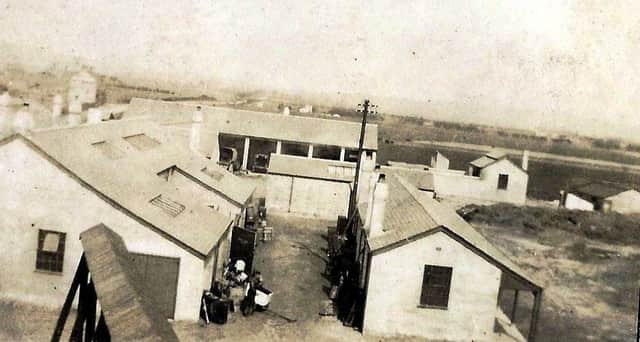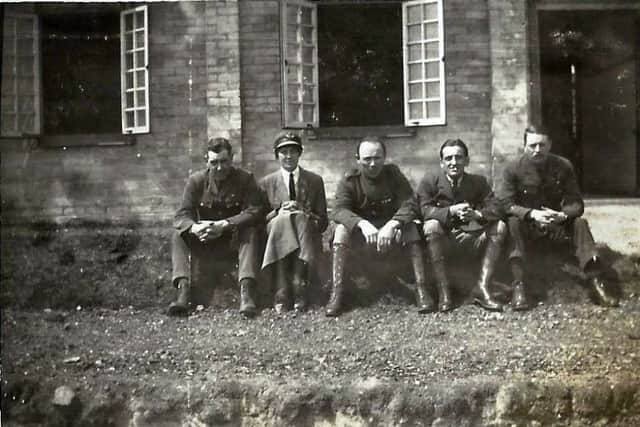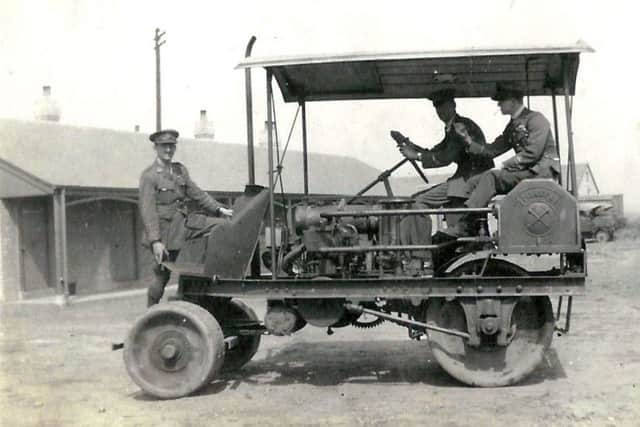Life on an early 1900s Sunderland airfield


Today, he concludes his look at the airfield by looking at life on the site.
Chris Cordner reports.


Until very recently there was almost nothing known about life at the Hylton Aerodrome First World War airfield.
Advertisement
Hide AdAdvertisement
Hide AdHowever, thanks to a photographic collection held by Charles Bracknell that has changed.
The aerodrome was only in existence from late in 1916 until its closure during 1919. During that time it was an important part of Wearside’s defence against Zeppelins in the air and the U-boats threatening our shipping at sea.
The photograph archive includes images of the airfield’s basic and hastily constructed buildings, the machines that flew from there and the RAF personnel (including WRAF staff) of Home Squadron No 36.


The construction of the airfield was in part a response to the Zeppelin attack on the town on April 1, 1916.
Advertisement
Hide AdAdvertisement
Hide AdOur photographs include a view of the living accommodation probably taken from an aircraft-hanger nearby.
A second shows three officers and a truck which was used for moving aeroplanes around the site or making runway areas. They include Stuart Norman Menzies, the great uncle of Charles Bracknell, on the right hand side of the picture.
Another picture shows the last remaining servicemen and woman, sitting in front of what appears to be a cleared-out building. It was taken just before the airfields closure.


Another, not shown on this page, shows WRAF girls in front of a service accommodation block.
Advertisement
Hide AdAdvertisement
Hide AdUnfortunately, the end to the war did not mean that the danger for those still serving ceased to exist once the guns fell silent.
The Spanish Flu pandemic raged in the post war period and is estimated to be responsible for significantly more deaths than the war itself.
Some also died who were still in service. Life in the armed forces still held danger for those who were still working around weapons, heavy equipment or even as a result of everyday accidents. Those involved in clearing-up the


battlefields were particularly at risk.
One event at Hylton, which was reported in the press, happened one week after the Armistice itself on November 11, 1918.
Advertisement
Hide AdAdvertisement
Hide AdBy then reporting restrictions under the Defence of the Realm Act had been lifted.
On November 18, two RAF servicemen died in an accident at Hylton.
Corporal William Henderson, 24, and Air Mechanic Frank Holmes, 23, died as a result of an explosion and fire.
A booming noise was heard coming from the accommodation block which, on investigation, was found to have originated from the bathhouse.
Advertisement
Hide AdAdvertisement
Hide AdThe building was on fire and, from the sound of men screaming inside, it was obvious they were in trouble.
Airmen threw themselves at the bathhouse door to break it down and they were led by the Sergeant on duty.
They managed to get in and the two men were eventually brought out alive but in considerable pain.
Henderson and Holmes were then taken to the Royal Infirmary where, unfortunately, they both died within 24 hours.
Advertisement
Hide AdAdvertisement
Hide AdEvidence was given into the deaths and experts decided that the most likely reason for the fire and explosion was that the men had been using petrol to clean their clothes in the bathhouse.
This was against all the standing orders at the airbase.
It was thought that vapour fumes from the petrol had escaped to next door where the fire which heated the bathhouse was found.
This caused the initial explosion and the fire which followed.
Following an inquest, the Sunderland Coroner gave a verdict of accidental death.
Advertisement
Hide AdAdvertisement
Hide AdOur thanks go to Trevor, who is a member of the Sunderland Antiquarian Society, for his articles on Hylton Airfield, which is the site of the Nissan car plant these days.
To find out more about the Sunderland Antiquarian Society, members of the public can visit its base which is in Douro Terrace, and is open on Wednesdays and Saturdays between 9.30am and noon.
People can also visit www.sunderland-antiquarians.org/